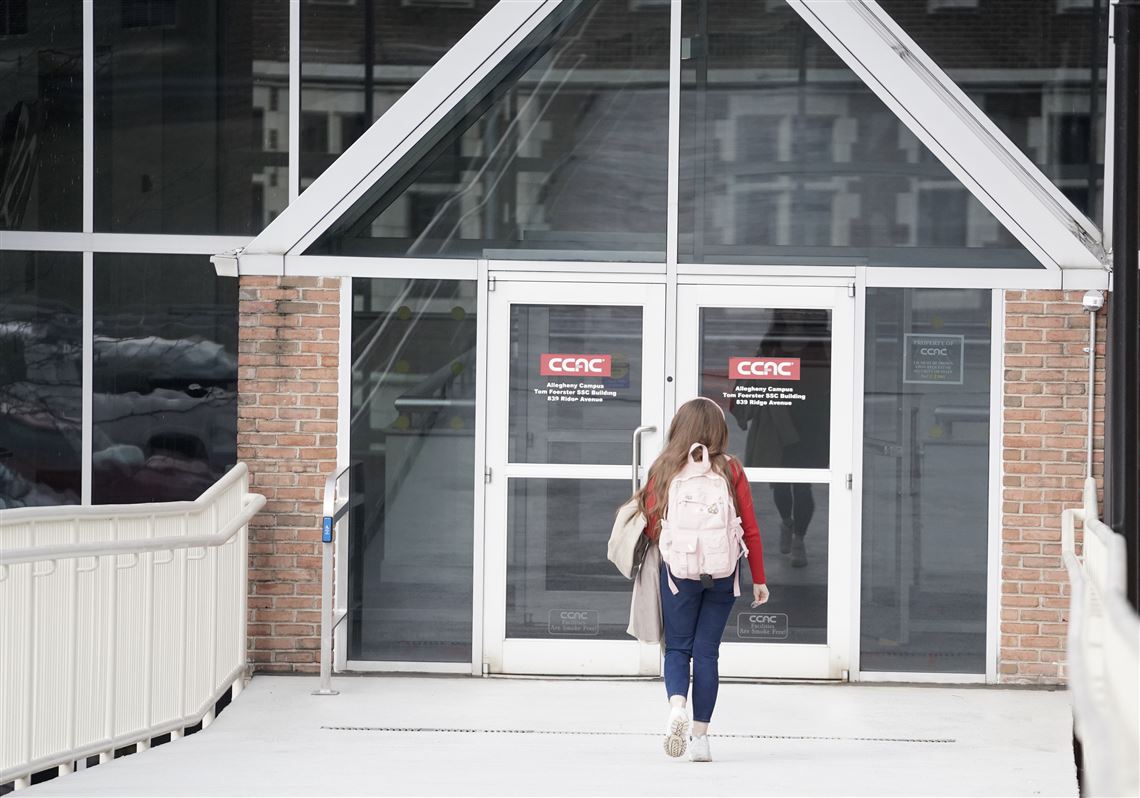Higher education leaders and experts across the region are hopeful that a college education will become more accessible and affordable if a proposal by Gov. Josh Shapiro comes to fruition.
Mr. Shapiro announced a plan Friday to put state system schools and community colleges under a single organization and cap tuition and fees at $1,000 per semester at state-owned universities or community colleges for students who meet certain financial guidelines.
The plan would impact community colleges in Allegheny, Butler, Beaver and Westmoreland counties and regional state-system schools, including Pennsylvania Western University, Indiana University of Pennsylvania and Slippery Rock University.
“I am encouraged by Gov. Shapiro’s vision for a new blueprint for higher education in Pennsylvania,” Quinton Bullock, president of the Community College of Allegheny County, said in a statement. “This is a wonderful opportunity for the 10 [Pennsylvania State System of Higher Education] colleges and 15 community colleges to work together to develop a system that is accessible, affordable and creates opportunities for Pennsylvanians across the Commonwealth.”
Mr. Shapiro said colleges and universities in the state have suffered from “30 years of disinvestment.” Pennsylvania spends less on higher education than any other state except New Hampshire.
Under his plan, state-owned universities and community colleges would be united under a single governance system that preserves local leadership. The approach, Mr. Shapiro said, would let schools “create pathways to affordable credentials and degrees.”
After the system is in place, newly invested money would allow Pennsylvanians making up to the median income to pay no more than $1,000 in tuition and fees per semester. Tuition at the state-owned universities now is $7,716 per academic year, a rate unchanged for five years.
Further details about the plan are expected in Mr. Shapiro’s budget address Feb. 6. He said the budget would include a “significant investment” in higher education, but the Legislature would have a say about increased state spending under the plan.
Education experts say the plan could help decrease tuition rates, increase the number of student enrollments, and make it easier for students to complete courses at a community college before transferring to a state-owned university.
“It will go a long way toward making a difference in making our community colleges accessible,” said Linda DeAngelo, an associate professor of higher education and a faculty fellow at the Center for Urban Education at the University of Pittsburgh.
“This new governance structure between PASSHE institutions and the community colleges will really help in terms of creating a more seamless opportunity for students who do want to move between institutions.”
Mr. Shapiro’s announcement comes on the heels of persistent enrollment declines at many of these institutions. In the past 15 years, all four community colleges in the Pittsburgh region saw their enrollments fall by at least 40% — though 2023 data indicates some community colleges could be seeing a slight recovery in student population numbers.
In fall 2021, CCAC enrolled about 20,700 students, Westmoreland County Community College enrolled about 4,100, Community College of Beaver County enrolled about 1,700 and Butler County Community College enrolled roughly 3,400.
The region’s state system schools also have battled enrollment declines, to varying degrees. Between fall 2014 and fall 2023, Slippery Rock’s enrollment only dropped 1.5% — to about 8,300 students from nearly 8,500. But IUP’s student population fell more than 36% during the same period, to about 9,200 students from more than 14,500.
Most significantly, PennWest’s three campuses have seen a 45% plunge in students since 2014. Less than two years ago, the state system consolidated California University of Pennsylvania, Edinboro University and Clarion University to form PennWest after the three schools battled declining enrollment and financial challenges for years.
Systemwide, enrollment at the 10 state universities has fallen nearly 25% since 2014. The system’s total headcount was more than 109,000 in fall 2014. It was 82,688 for the 2023-24 school year, according to PASSHE data.
But lower tuition, Ms. DeAngelo said, could begin to shift those numbers.
According to a 2021 report from the Center on Budget and Policy Priorities, average tuition and fees at a public four-year university in 2018 accounted for 34% of a median household income in Pennsylvania. That number fell to 13% at the state’s community colleges.
“Affordability is a large issue, and so if the institutions aren’t accessible, students can be opting into other types of education or not into education at all,” Ms. DeAngelo said. “It’s even leading to students potentially leaving the state to seek education, and so making these institutions affordable as well as making the transitions between them more seamless will attract students to the system.”
Mr. Shapiro’s proposal seems to mirror initiatives that have taken place across the country.
California lawmakers in 1960 officially adopted the California Master Plan for Higher Education, which commits the state to accessible admissions, affordability, equity and quality of education. New York in 2021 also considered an initiative around a master plan.
Mr. Shapiro’s plan was met with some pushback from Republicans.
Senate President Pro Tempore Kim Ward, R-Westmoreland, said that while Mr. Shapiro’s words offered hope, the announcement was light on details and contained no cost figures.
“This is not a blueprint,” Ms. Ward said. “It’s a page stolen from the Biden administration’s playbook.”
But Pennsylvania university leaders have called for similar collaborations in recent years as they worked to make the transition from community colleges easier.
“This is something that institutions and institutional leaders have been looking at, and you can tell … that there is support,” Ms. DeAngelo said of Mr. Shapiro’s proposal.
Roger W. Davis, president of the Community College of Beaver County, said in a statement that the institution “appreciates the governor’s vision to strengthen higher education across the Commonwealth, and his understanding of the critical need for more state investments in our institutions will ultimately increase access, affordability, workforce development, and student success locally.”
He said CCBC plans to collaborate with Mr. Shapiro, other community colleges and PASSHE schools to “develop the roadmap for the future direction of higher education” in the state.
Butler County Community College President Nick Neupauer said school officials are reviewing the governor’s recommendations “as potential opportunities to build on the mission we share with other community colleges in the state, which is to provide affordable, accessible, high-quality education.”
That’s something Tuesday Stanley, president of the Westmoreland County Community College, said her institution continually focuses on.
“We have made it part of our mission to create an institution that works well with other colleges and universities in Pennsylvania for the benefit of our students and communities we serve,” Ms. Stanley said in a statement. “The pathways we have created with our transfer partners have streamlined the process and our students are able to seamlessly continue their education.”
Through collaborations with PASSHE schools, Ms. Stanley said the schools could “discover opportunities that further enhance what we can offer students.”
State system leaders agreed.
“Together we can create a new, larger system with better collaboration that gives students more pathways to a degree or credential, rapidly adjusts to the changing knowledge and skills employers want, and provides the lowest-cost option for students throughout their lifetime,” state system Chancellor Dan Greenstein said in a statement.
First Published: January 28, 2024, 10:30 a.m.
Updated: January 29, 2024, 8:05 p.m.


















